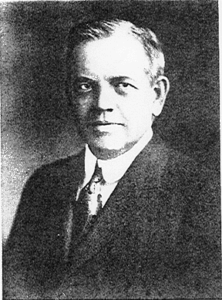Wartime Blues
The Hall of Fame struggled through the war. There were no elections during the brief Phelps incumbency and only one installation — that of Stephen Foster in May, 1941, just months before the bombing of Pearl Harbor.
During the war, almost the only attention of note to the Hall was an article in the New York Sunday Times, March, 1943, by art critic Edwin Alden Jewell, called “Should We Melt Down Our Heroes?” A group consisting of Chester Dale, “widely-known collector”, sculptor William Zorach; architect William Lescaze; museum director Juliana Force, and James Montgomery Flagg, met to consider the wartime question: “Suppose we urgently needed scrap metal. Which of our statues in New York City could be sacrificed. In short, which are bad and which are good?” The group sorted out and discussed the chief pieces of metal statuary in the city. Toward the end of the evening the supercilious “committee voted that the entire Hall of Fame would go into the war’s cauldron . . . It was a sweeping gesture. We did not deliberate separately on each bust but made sure that the massive gates weren’t overlooked.”
Robert Underwood Johnson’s beloved Alexander Gates at the entrance of the Hall of Fame had vanished with nitecaps. “Billy Phelps” disdained to reply and told Chancellor Chase that nobody could hurt the Hall of Fame. Nobody?
Phelps too served only briefly. Biographer Pottle did not mention his connection with the Hall of Fame. Dr. Phelps liked the Hall well enough, but he seems to have “liked whate’er [he] looked upon, and [his] looks went everywhere,” as his beloved Browning had once said of a duchess. He lectured to his audiences as though he liked them all, and he probably did — so much so that he couldn’t resist dropping names. One page of his autobiography contains about forty names of the great and famous, himself “not least but honored of them all,” as his beloved Tennyson once wrote of another wanderer.
Of the many names in the almost thousand-page book, not one was the Hall of Fame, of which he had been an elector for about fifteen years and principal speaker at the unveiling of James Russell Lowell. He did not die of overwork in the interest of the “true shrine,” but he played the role assigned to him as well as age would allow. Best of all he played the role of teacher, Pottle or no Pottle, and the many thoughts he expressed on the glories of literature were crystal clear, unpretentious, and often moving.
About a month after the death of Professor Phelps, Chancellor Chase wrote a number of people about filling the vacant directorship. One was Percy S. Strauss, head of the NYU Council Committee on the Hall of Fame. “Whoever it is,” said the Chancellor to Strauss, “ought to be like his predecessors (1) a man of distinction, and (2) well enough related to the Hall of Fame as to make the appointment seem natural.”
In the second category he put Dean Marshall S. Brown, who had for years worked intimately with the Personnel of the Hall, knew its problems and was respected for his sound advice. The Chancellor thought that Brown certainly would be competent to “perform the slight duties which are required,” especially if he were “surrounded by a small advisory committee of well known names.” In other words, good enough to direct the show from backstage, but not enough to compete upstage with the stars.
Another possibility was John Henry MacCracken, who had worked closely his father, the Chancellor, on the affairs of the Hall of Fame. He was said to be not very busy and ” . . . perhaps would be glad to do a little work with it.” In fact, Percy Strauss thought he preferred John MacCracken. And why not. Bearer of a distinguished name, he had been well thought of as President of Lafayette College. “He was an effective money raiser . . . When he left, the perpetual annual deficit had been eliminated,” and for his last eight years Lafayette had an annual balance. His social connections and his experience as Syndic (business agent) of NYU under his father “afforded him many contacts which proved to be of utmost advantage to Lafayette.”


John Henry MacCracken
In December, Dr. Angell accepted the job at $5,000 annually, on the understanding that he would remain as consultant to the National Broadcasting Company. He took the assignment as fifth director of the Hall “at a time when there is a reawakening of interest in American history,” said Chancellor Chase, “and in the democratic ideals of the great Americans enshrined there.” The duties of office were slight. It was 1944, and D-Day would dawn only months later.
Director Angell was the son of James Burrill Angell, president of the University of Michigan. Both had devoted their most productive years to education. A student of psychology, James Rowland became president of the American Psychological Association as the relatively young age of 37, even without the Ph.D., having been a professor at the University of Chicago and author of a popular textbook (Psychology, 1904). He refused the presidency of Dartmouth, and became head of Carnegie Corporation of New York, a foundation with a history of faith and good works in education. One year later, he was named president of Yale. He remained in New Haven until his retirement in 1937, when he refused another temptation — candidacy for the U.S. Senate — and accepted a plum more to his liking, the position at NBC.